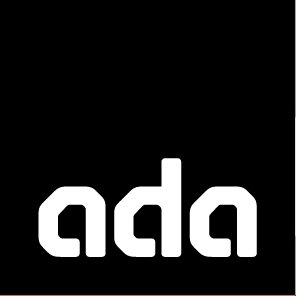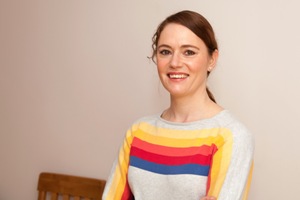Digital is increasingly woven into everything we do; from the products we interact with on a daily basis to the services we use. This means organisations need a workforce with technical skills to support our rapidly-growing digital economy.
However, according to Tech City UK – the government-backed body focused on accelerating the growth of digital businesses across the UK – despite the surge in digital tech jobs, which reached 1.64 million this year, up to 100,000 remain unfulfilled, says freelance writer, Tanya Weaver.
Ada, the National College for Digital Skills, is focused on addressing this skills gap. Based in London, this state-funded, further education college took in its first cohort of 58 students aged 16-19 last year. Now entering its second academic year, the aim is to expand to 2,000 students by 2021, with a specific focus on attracting women and those from low-income households.
Ada is supported by a range of founding partners, one of which is Deloitte. The Deloitte team not only provides input on the curriculum but also sets projects for the students, take parts in the coaching programme and supports Ada recruitment events. In June 2017 Deloitte and Ada devised an Internet of Things (IoT) based challenge for the sixth form students to help them explore IoT possibilities and develop their project management skills.
“The relevance of smart products that are embedded with sensors and software, like smart meters in our homes, mean that the IoT is appearing all around us. The line between what’s digital and what’s not is blurring even more and we thought that the students may find this theme relevant and interesting to get engaged with on a practical level,” says Jamie Gore, technology analyst and Ada relationship lead.
The brief for this three-day challenge was ‘Ada College as a Smart Campus’ and would see students competing in teams to create a product that would help to connect students, teachers and the college using data generated by sensors and software and the IoT.
The Deloitte team, including its IoT experts, came in person to deliver the brief and remained over the three days to assist with any queries the students might have. They also presented them with a large toolkit – consisting of both hardware and software – that they could use to develop their IoT application.
“We wanted to really challenge them. We didn’t want to give them a closed project. We wanted them to really use their creativity and entrepreneurship to create something really interesting and something they had control over,” comments Gore.
On the hardware side, the tools included: the Raspberry Pi microcomputer; the Amazon Echo Dot – a miniaturised version of the Alexa voice recognition product; and then sensors in the form of radio-frequency identification (RFID) stickers and RFID readers.
On the software side, the students had access to ThingWorx, a development platform from software company PTC that can be used to build IoT dashboards to monitor data from smart, connected products. In the case of this project, through ThingWorx the students could use the RFID reader to record data from the RFID stickers.
“We chose ThingWorx because it is easy to use and because of its applicability in enterprise. We wanted students to use the same tools that big tech companies are using,” says Thomas Watling, from Deloitte’s IoT innovation group.
With the brief in hand, the students understandably felt somewhat daunted by what they had to achieve in three short days because not only was the IoT new to them but most were also unfamiliar with the toolkit, especially ThingWorx. “ThingWorx was the hardest thing for the students to get their heads around but PTC was brilliant and so supportive. They flew over a developer to help the students over the three days,” Tina Götschi, Ada’s head of Computer Science.
Additionally, the students also had access to PTC’s recently launched online IoT training platform called IoT University. Here the students or, indeed, anybody can register for free and start learning about the IoT and ThingWorx through interactive and easy-to-follow tutorials that are delivered by industry experts. “Having access to these tutorials, which I think they really enjoyed, opened their eyes to new things that you can achieve with software,” comments Gore.
But the technical work was only one aspect of the challenge as the panel of judges, which included representatives from Ada College, Deloitte and PTC, would be judging the teams against four evenly weighted categories. These included identification of the problem, project management, technical work and quality of the pitch.

“When good ideas come out, they need to be clearly explained – in particular the problem that they solve, even more so than the technical solution itself. It was part of the challenge for the students to strike the right balance, while having spent three full days working with these exciting exponential technologies,” points out Francois Disch, part of Deloitte Systems Integration and also one of the judges.
The winning team had created a solution to address the problem teachers face in trying to locate a specific student without having to physically find them. Using a unique student card with an RFID sticker, the student could tap against an RFID reader device located outside each classroom which would associate that student as being in or signed out.
“Rather than thinking of a whole connected ecosystem of interacting services in a connected campus, for this challenge it was about starting small with one solution that could then be built upon. I think that was why the winning team won because they achieved something technical but pitched it really well and, more so, they had thought about this connectivity,” comments Watling.
Although the team had not used ThingWorx specifically within the allotted three days, if they had more time they definitely would have. “Using ThingWorx, we could then analyse the data from these RFID sensors. For instance, when it comes to recording how late a student is for class, information of when they tapped into a classroom is easily accessible. This would save staff members time who would otherwise be messing around with spreadsheets,” explains team leader Ross Nkama.
One of the groups, who created a solution around a temperature and humidity sensor, had utilised ThingWorx. Team member Jakub Olender, who had dedicated about four hours to watching the tutorials available on IoT University and then put what he had learnt into practice, commented on how easy it was to get up and running with the software.
“Jakub’s group’s idea was to use Thingworx to visualise data that the temperature sensor was collecting and to send this data to the air conditioning controller in order to regulate the temperature in a room or classroom – hence the name of their product ‘homeostasis’,” says Götschi.
Although the challenge is now over, the collaboration with PTC is only just beginning as Götschi is eager for the students to utilise ThingWorx within the curriculum itself. “For us, this is exciting and a start of a potentially great partnership that will get our students into something that is very cutting edge,” she says.
The plan is to implement ThingWorx into the curriculum within two potential units. The first is the ‘Impact of Computing’ unit, which is part of the BTEC Computer Science Diploma under the New and Emerging Technologies section.
“Within this unit the students have to implement a new computing solution and then look at the wider repercussions of that in terms of a technical, social and economic point of view. It would almost be an extension of Deloitte’s connected campus challenge,” explains Götschi.
“Then the second unit is more of an electronics unit that looks at using things like sensors and ThingWorx would be a perfect platform for the software,” she adds.
However, the challenge of being a teacher in a College such as Ada is that technology changes all the time and educators need to keep abreast of it all. So the appeal of ThingWorx is not only the hands-on support that PTC will provide, as it demonstrated with the IoT challenge, but the free access students, as well as teachers, have to the resources at IoT University.
“What we are really interested in at Ada is to give students experience of what happens out there in the real tech world. For this reason we want to use full versions of the tools so that they are not sheltered from the complexities out there in industry.
But the often daunting thing for teachers is that they have to spend so much time learning it and becoming experts before they can use that in the classroom. With IoT University, students can sign up and get up to speed with ThingWorx themselves by taking the online courses and tutorials,” says Götschi.
Another advantage of its new relationship with PTC is the other potential doors it opens to the College. For instance, PTC is a Tier One Partner at the University of Sheffield Advanced Manufacturing Research Centre (AMRC), which carries out world-leading research into advanced manufacturing processes and materials. Within the AMRC campus is AMRC Factory 2050 dedicated to demonstrating the implementation and use of advanced manufacturing techniques.
“PTC has links to the AMRC and through this partnership we could arrange a visit with our students. For me, as an educator, it’s really important that our students get to see the range of jobs and careers in digital. Many colleges would not have these opportunities, but through our partnerships, we can show them a much wider view and give them many more options for potential futures that suit them,” concludes Götschi.
For more information go to www.iotu.com
The author of this blog is freelance writer, Tanya Weaver
Comment on this article below or via Twitter: @IoTNow_OR @jcIoTnow










